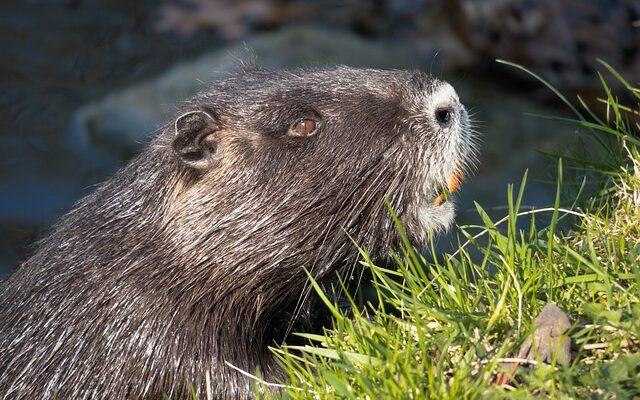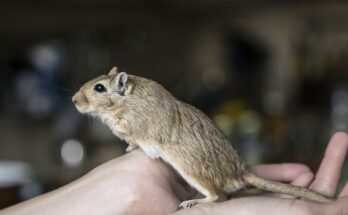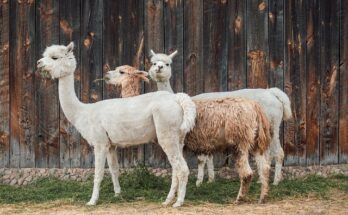Introduction:
In the realm of natural architecture, few creatures can match the hard work and ingenuity of the beaver. Known for their ability to shape landscapes with their ponds and huts, these semiaquatic mammals have a remarkable adaptation that lies at the core of their engineering abilities: the beaver skull. In this article, we delve into the intricate anatomy and significance of the beaver skull, revealing the secrets behind its remarkable abilities and critical role in shaping ecosystems.
Description:
“Uncover the secrets of nature’s engineers with our comprehensive guide to the beaver skull on blogsintra. Explore the anatomy, function, and significance of this remarkable adaptation, and discover the crucial role it plays in shaping ecosystems. Delve into the world of beavers and gain a deeper appreciation for their incredible engineering prowess.”
Beaver skull anatomy:
The beaver skull is a marvel of evolutionary engineering, fine-tuned to meet the unique challenges of a semi-aquatic lifestyle. At first glance, it may resemble other rodent skulls, but closer inspection reveals a number of important adaptations that set it apart. The most striking thing is undoubtedly the large incisors, which protrude and grow continuously during the life of the beaver. These razor-sharp teeth are perfect for gnawing through tough wood, a task that is at the heart of a beaver’s daily work.
Function and setting:
The impressive front teeth on the beaver skull serve a dual purpose: not only are they important tools for harvesting timber, but they also play a crucial role in the construction of dams and huts. Using its powerful jaw muscles, the beaver can easily chew through trees and turn them into the building blocks of their aquatic environment. But it’s not just the teeth that make the beaver skull so remarkable; The entire skull structure is fine-tuned to withstand the enormous forces involved in these tasks. Thick, robust bones provide the necessary support and protection, ensuring the skull remains intact even under the pressure of gnawing through dense wood.
Behavioral Insights:
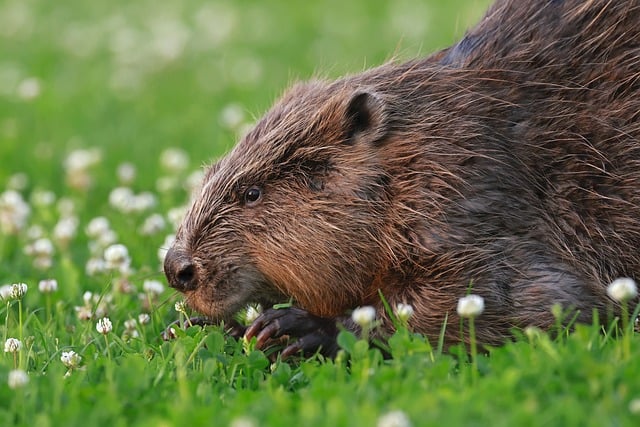
In addition to its physical characteristics, the beaver skull is closely linked to the complex behavior that characterizes these hard-working rodents. Building dams, building huts, and defending territory are activities that rely heavily on the skull’s unique abilities. Beavers use their teeth not only as tools but also as weapons. They use them to fend off rivals and maintain dominance in their colonies. Communication is another important aspect of beaver behavior, with the skull playing a critical role in producing vocalizations and scent markings that facilitate social interactions.
Information sheet on the subject of beavers
Beaver: a large, semi-aquatic rodent.
Kingdom: | Animalia
Stem: | Chordates
Class: | Mammal
Order: | Rodent
Family: | Castoridae
Gender: | role
The two species: are the North American beaver and the Eurasian beaver.
Length and weight:
Beavers are the largest rodent in North America and the second largest living rodent after the capybara, which is found in South America. They weigh between 35 and 65 pounds, with the heaviest beaver ever weighing 110 pounds. They are 3 to 4 feet tall and 1 to 1.5 feet tall.
Appearance:
Beavers have a robust body that allows them to pull heavy loads and retain heat. Like many aquatic mammals, they have a streamlined body. They usually have brown or gray fur and a broad scaly tail. When they swim, their tail acts as a rudder. They have large, orange front teeth that continue to grow throughout life. The outer enamel of the front teeth is very thick and orange in color due to the presence of iron compounds. They have webbed hind legs and digitized front legs. Compared to the North American beaver, the Eurasian beaver has a longer skull with a more triangular nasal bone opening, a lighter fur color, and a narrower tail.
Eating habits:
Beavers are herbivores and occasionally eat leaves, bark, and aquatic plants.
Habitat:
The animals are found in a range of freshwater habitats, such as rivers, streams, lakes, and ponds.

Geography:
North American beavers live in Canada, large parts of the United States, and northern Mexico. Eurasiatic beavers are now found in Germany, Poland, Slovakia, and parts of Scandinavia and some other countries.
Breeding:
Beavers form monogamous pairs and both males and females raise their young. They breed in the winter from January to the end of February and the females give birth in the spring. At birth, beaver cubs weigh about 1 pound. Within an hour of birth, they enter the water in their lodge and within a week they are competent swimmers. The kittens stay close to their mother in the cabin for the first few weeks, nurse often, and gain considerable weight. You breastfeed for about 6 weeks.
Young cubs usually leave their den after their first year of life, during which time the mother usually stays with them while the father protects the territory. Beavers defend their territory when necessary. After another year, beaver cubs usually leave the house to mate and establish their own territory.
Social structure:
Beavers are social animals that form powerful family bonds. Each group consists of a breeding pair, this year’s young and the previous year’s surviving offspring, called yearlings. This group may also include sub-adults who are 2 years of age or older. These subadults generally do not breed.
Beavers help to facilitate the construction of deep water dams and to protect themselves from predators. They then build a lodge in the middle of the artificial body of water. In winter, family groups live together in their hut and share food from the food pantry. Their family life is exceptionally stable and is based on a hierarchy where the adults dominate the yearlings and the yearlings dominate the young.
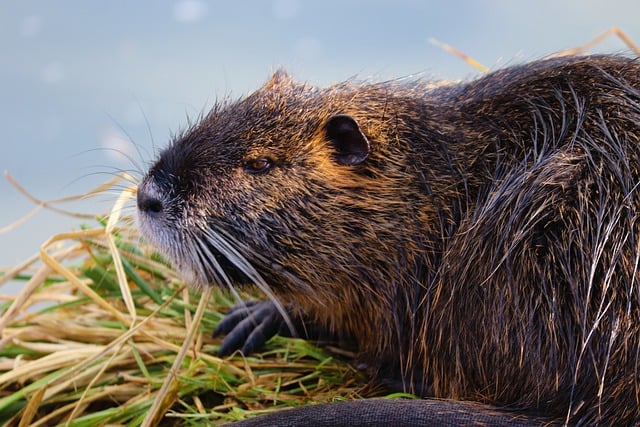
Life span:
North American beavers typically live 10 to 12 years and can live up to 30 years. The average lifespan of the Eurasian beaver is 7 to 8 years and can be up to 25 years.
Driven:
Beavers were widely hunted in the late 16th century because their thick fur was sought after as part of clothing and hats. Beavers were also killed for glandular secretions, which were used as medicines and perfumes.
Conservation status:
The North American beaver and the Eurasian beaver are both on the IUCN Red List and are considered to be of “Least Concern”.
FAQS:
THE STORY. The average adult beaver’s skull is about 5.5 inches long and 4.5 inches wide. Each of its front incisors can be up to 5mm, wide and between 20 and 25mm long. An elongated maxilla and mandible project the incisors away from the beaver’s much smaller premolars and molars; it has no canines.
The incisors of some rodents, like beavers, constantly grow, so they may be more prominent in size than the other types of teeth. These incisors will also have a yellowish-orange color to them. Other animals, like deer, will only have incisors on their lower jaw.
For example, you can tell the difference between a porcupine and a beaver skull by looking at the foramen inside the orbits (eye sockets). The porcupine has a comparatively smaller skull but a much larger foramen within the orbits than its relative, the beaver. Skulls are divided into many plates.
Step-by-step guide to bleaching skulls:
Cut the skull or keep it whole.
Wash out flesh, blood, and brain matter. …
Leave the cleaned skull in a bucket of water for 48 hours.
Boil the skull carefully until all the fat and flesh comes away.
Place the cleaned and cooled skull in a bowl of hydrogen peroxide (5–10%)
more items…
Etymology. The English word beaver comes from the Old English word before or before and is connected to the German word biber and the Dutch word beaver. The ultimate origin of the word is an Indo-European root for ‘brown’. The genus name Castor has its origin in the Greek Kastor and translates as ‘beaver’.
The brain anatomy of the beaver is not particularly specialized for its semiaquatic life history. The brain masses of a beaver weighing 11.7 and 17 kg are 41 and 45 g respectively.
Teeth Aren’t Tools… Unless You’re a Beaver
How can beavers get away with chewing through entire tree trunks with their teeth when we can’t so much as open a bottle with ours without risking permanent damage? Well, unlike humans, beaver teeth have two handy adaptations to help them with all that dental carpentry.
This is because, whereas other rodents have magnesium in their tooth enamel, beavers have iron. So beavers have orange teeth for the same reason we have red blood. The iron causes the orange coloring in beavers’ teeth, makes the teeth stronger against mechanical stress, and makes them more resistant to acid.
Diet. Leaves, inner bark, and twigs of deciduous trees and shrubs make up the primary food. “Popple” (aspen) is the favorite followed by birch, cottonwood, willow, oak, and maple. Beavers will also eat herbaceous plants, grasses, and some aquatic plants.
The most effective means of identifying a skull and determining the correct species is with the use of a dichotomous key. A dichotomous key allows a person, through a series of questions, to identify an organism via the process of elimination. Plants, fish, and even skulls can be identified using this method.
How do skulls have teeth?
So, here’s the scoop: Our teeth are embedded in our jaw bones, where each tooth has its own little cubby hole known as a socket. Long roots hold each one in place. Roots contain blood vessels and nerves and are anchored by ligaments and dental tissue called cementum.

